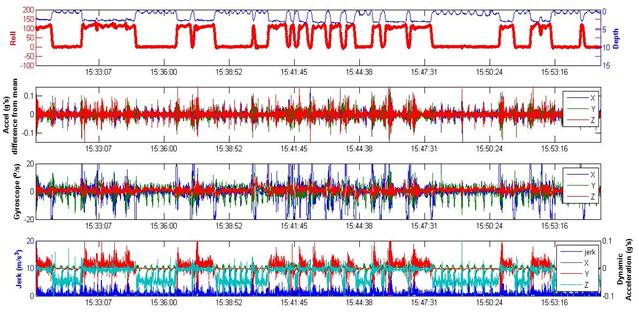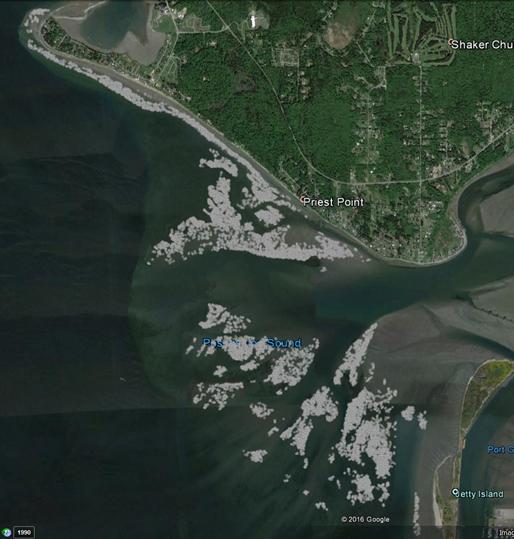2024 Identification Guide to Northern Puget Sound gray whales (Orca Network)
Cascadia Research has been conducting long-term studies of a group of gray whales in N Puget Sound (NPS), now called the Sounders, as a part of a larger study of gray whales in the Pacific Northwest. While the original whales appear to have discovered this area in 1990-1991, additional whales arrived in 1999-2000 and again starting in 2018- 2019. These periods, coinciding with Unusual Mortality Events appear to be when whales were potentially searching for food after their winter fast and long migration. The sex of ten of these whales has been determined genetically from skin samples, seven are male and three are female. None of the known females has been seen with a calf, though there have been periodic gaps in their visiting the area which may indicate they are calving some years but not bringing the calf here. This could be due to later timing in migration after having a calf, or to avoid risk to the calf in the more dangerous inland waters.
During their northern migration from Baja California, these individuals break off the migration route to feed on ghost shrimp each spring (approximately March-May) in the North Puget Sound waters before continuing north to the Bering and Chukchi Seas.
Cascadia has gathered data on the Sounders for more than 30 years documenting the individuals that return and the timing of their stays here. The work expanded in 2015-16 with support from DNR, we conducted expanded dedicated surveys, photo-ID, tag deployments to examine feeding behavior, and documenting feeding locations. The project addresses a number of objectives related to key elements required to address gray whale consumption and reliance on ghost shrimp in the northern Puget Sound region
Our approach in 2023 and 2024 is to further expand our research and work with other partners taking advance of this unique opportunity to study a seasonally resident group of whales. Major elements of our current research include:
- Deployment of multi-sensor suction-cup video tags in 2015, 2016, 2021, and 2023 including the first drone-deployed tags on gray whales in April 2023 (with Ocean Alliance). These revealed that feeding events can be discerned from characteristic feeding posture and behavior from the dive kinematics of the tags and that the whales were almost exclusively feeding in shallow intertidal waters during short periods at high tide. See Cascadia Youtube Channel for videos of deployments and some clips from the more than 9 hours of dual footage from the deployments on CRC ID 723.
- Expanding on past work done by Laurie Weitkamp and Washington DNR, Stanford PhD student Hannah Clayton, will be examining the prey, feeding behavior, and energetics of the Sounders.
- Aerial overflights satellite images from Google Earth taken at low tide revealed visible feeding pits of the Sounders gray whales in N Puget Sound and feeding locations both in current and past years.
- Documenting the apparent link between increased number of Sounders and their increased time here in response to past and the current Unusual Mortality Event when gray whales were facing added nutritional stress.
- A joint project with John Durban and Holly Fearnbach and initially supported by NOAA examining the health condition of the Sounders and how it varies year to year and through the period they feed here.
Some of the accomplishments and lessons learned so far are briefly summarized in Figures 1-5 below.

Figure 1. Summary of annual resightings of identified gray whales seen three or more years in northern Puget Sound.

Figure 2. Deployment of suction-cup attached video tag on CRC ID 723 on 25 March 2016. Tag stayed on for 23 hours.
Figure 3. Images of tag deployment on ID 22 on 17 April 2015 (top two photos) and samples of video from ID 383 on 19 April 2015 dives off Hat Island (bottom two photos). Bottom photos show ID 49 head down on bottom but not apparently feeding and in bottom right tagged whale rolled on left side but no evidence of feeding.

Figure 4. Sample of data off tag on ID 22 while it was feeding on ghost shrimp on the Snohomish Delta on 17 April 2015. Top section shows dive depth in blue and roll in red, demonstrating the whale feeding with rolls to 90-100 degrees for extended periods on bottom section of each dive down to just 2-3 m water depth.

Figure 5. Locations of some of the almost 14,000 feeding pits documented on the Snohomish Delta from Google Earth images in spring and early summer from 2005 to 2015.
Click here for a poster discussing the use of these Google Earth images as a way to examine feeding areas for gray whales in Puget Sound, Washington.
Click here to learn more about the specific whales and their names.